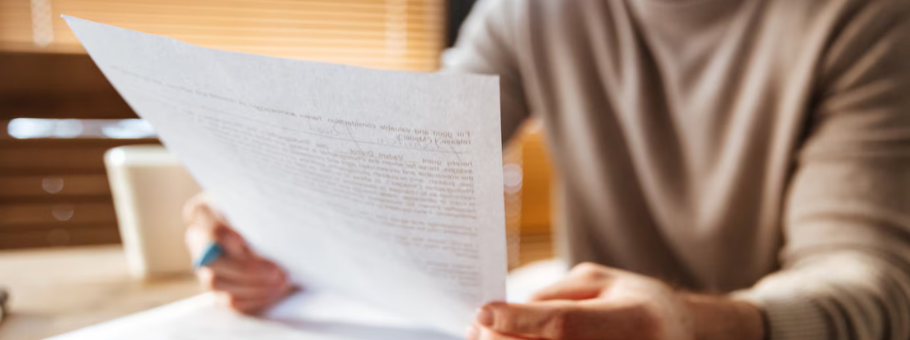Importance of the “Methods” Section in Academic Papers

This section of a research article is often written first since it is usually the most concrete and specific part of the text, and thus easiest to write. In the hourglass described in our post “Academic Writing in Science: An Overview,” the Methods section is the most “narrow” part.
This section is mainly read by experts, who are interested in the procedures used in that particular field or who read the study to gain new information that they can use themselves. Individual sub-sections on separate topics usually begin with a short introduction to orient the reader to the topic. After they have been introduced, materials and procedures are then described in detail.
In fields such as Biology, Chemistry and Medicine, the Methods section is a standard element of a research article. Some fields, particularly those with few established methods, typically highlight this section. However, other fields—such as many engineering disciplines—focus more on the elaboration of a new “product,” which may take the form of an algorithm, a strategy, a model, or a system.
Content
The Methods section may also be signaled by headings such as Study Design, Experimental Procedures, Experimental Setup, Materials and Procedures, and Materials and Methods. Regardless of the name used, this section, presents the materials, procedures, and methods used in a study.
We can give less general advice about the Methods section than about any other part of a research article. This is because more than any other part of the article, the Methods section varies most in their structure and content. Overall, the method describes the steps that you followed in conducting your study and the materials you used in each step. The elements included in the method section and the order in which they are presented may differ from discipline to discipline. However, the following list provides a rough outline:
- Overview of the Experiment
- Population/Sample
- Location
- Restrictions/Limiting Conditions
- Sampling Technique
- Procedures*
- Materials*
- Variables
- Statistical Treatment
Tip!
Supplier’s information: The manufacturer or supplier’s information of the materials used is usually mentioned alongside the material/instrument at the first occurrence. This information includes the name of the supplier, state, and country. The model number of the instrument, if any, must also be mentioned.
Example: The precipitate was examined using a 1200EX electron microscope (JOEL, Tokyo, Japan) at an acceleration voltage of 100 kV.
The target journal needs to be checked for specific guidelines on whether it is mandatory to include the information.
Related: Do you have questions on language, grammar, or manuscript drafting? Get personalized answers on the FREE Q&A Forum!
Language
Variation in Approach
There are two basic approaches that can be taken to write this section: a “condensed” approach and an “extended” approach.
Condensed approach: In the natural science and engineering and in parts of medical research, standard practices and established methods are much more widely available. In these areas, sometimes methods may be largely taken for granted. Therefore, this approach is more succinct in nature dealing with mostly facts. For example: http://www.biochemj.org/bj/246/0325/2460325.pdf
Extended approach: In many of the social sciences, the methodology is very important and is often described in considerable detail. In some cases, the main point of a paper will be to announce some development in the methodology. For example: http://www.ausienet.com/journal/vol2iss2/hockley.pdf
Table 1: Variation in Methods Sections
| Condensed | Extended |
| Assumes background knowledge | Sees need to provide background |
| Avoids named subsections | Several named subsections |
| Uses acronyms and citations as shorthand | Uses descriptions |
| Running series of verbs | Usually one finite verb per clause |
| Few “by + verb-ing” “how” statements | A number of “how” statements |
| Few definitions and examples | More definition and examples |
| Few justifications | Several justifications (often initial purpose clauses) |
| Few linking phrases | Wide range of linking phrases |
Source: Academic Writing for Graduate Students, The University of Michigan Press
Tense and Voice
The language used in the methods section is slightly different from the tone of the rest of the paper. As this section consists of descriptive facts, it is primarily written in past tense, and in passive voice.
Example on tense
- Avoid Present Tense: The PMA is dissolved in DMSO at a concentration of 1 mg/ml.
- Use Past Tense: The PMA was dissolved in DMSO at a concentration of 1 mg/ml.
Example on voice
- Avoid Active Voice: Bradford assay determines the protein concentration.
- Use Passive Voice: Protein concentration was determined by Bradford assay.
In addition, the number of citations in this section is very low, or negligible. The overall commentary is also restricted compared to other sections of the paper. The following table compares these features across sections of the paper.
Table 2: Frequencies of selected features
| Present tense | Past tense | Passive voice | Citations | Commentary | |
| Introduction | high | Mid | low | high | high |
| Methods | low | High | high | low | low |
| Results | low | High | variable | variable | variable |
| Discussion | high | Mid | variable | high | high |
With the above information serving as the background, the best way to start writing a Methods section is to read sample papers from the target journal. This will be the best guide on the style and structure (e.g., number of sections) required. In our next post, we will talk about how to report results and some of the key points to remember.









